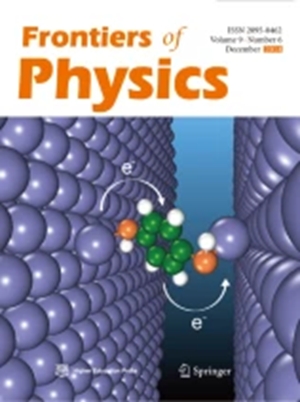Convolutional neural network classification of ultrasound images by liver fibrosis stages based on echo-envelope statistics
IF 6.5
2区 物理与天体物理
Q1 PHYSICS, MULTIDISCIPLINARY
引用次数: 0
Abstract
Introduction: Assessing the stage of liver fibrosis during the diagnosis and follow-up of patients with diffuse liver disease is crucial. The tissue structure in the fibrotic liver is reflected in the texture and contrast of an ultrasound image, with the pixel brightness indicating the intensity of the echo envelope. Therefore, the progression of liver fibrosis can be evaluated non-invasively by analyzing ultrasound images. Methods: A convolutional-neural-network (CNN) classification of ultrasound images was applied to estimate liver fibrosis. In this study, the colorization of the ultrasound images using echo-envelope statistics that correspond to the features of the images is proposed to improve the accuracy of CNN classification. In the proposed method, the ultrasound image is modulated by the 3rd- and 4th-order moments of pixel brightness. The two modulated images and the original image were then synthesized into a color image of RGB representation. Results and Discussion: The colorized ultrasound images were classified via transfer learning of VGG-16 to evaluate the effect of colorization. Of the 80 ultrasound images with liver fibrosis stages F1–F4, 38 images were accurately classified by the CNN using the original ultrasound images, whereas 47 images were classified by the proposed method.基于回声包络统计的超声图像肝纤维化分期的卷积神经网络分类
在弥漫性肝病患者的诊断和随访中评估肝纤维化的分期是至关重要的。超声图像的纹理和对比度反映了纤维化肝脏的组织结构,像素亮度表示回声包络的强度。因此,通过分析超声图像可以无创地评估肝纤维化的进展。方法:应用卷积神经网络(CNN)分类超声图像来评估肝纤维化。本研究提出利用与图像特征相对应的回波包络统计量对超声图像进行着色,以提高CNN分类的准确率。在该方法中,超声图像由像素亮度的三阶和四阶矩调制。然后将调制后的图像与原始图像合成为RGB表示的彩色图像。结果与讨论:通过VGG-16的迁移学习对彩色超声图像进行分类,评价着色效果。在80张肝纤维化分期为F1-F4的超声图像中,CNN使用原始超声图像对38张图像进行了准确分类,而采用本文方法对47张图像进行了分类。
本文章由计算机程序翻译,如有差异,请以英文原文为准。
求助全文
约1分钟内获得全文
求助全文
来源期刊

Frontiers of Physics
PHYSICS, MULTIDISCIPLINARY-
CiteScore
9.20
自引率
9.30%
发文量
898
审稿时长
6-12 weeks
期刊介绍:
Frontiers of Physics is an international peer-reviewed journal dedicated to showcasing the latest advancements and significant progress in various research areas within the field of physics. The journal's scope is broad, covering a range of topics that include:
Quantum computation and quantum information
Atomic, molecular, and optical physics
Condensed matter physics, material sciences, and interdisciplinary research
Particle, nuclear physics, astrophysics, and cosmology
The journal's mission is to highlight frontier achievements, hot topics, and cross-disciplinary points in physics, facilitating communication and idea exchange among physicists both in China and internationally. It serves as a platform for researchers to share their findings and insights, fostering collaboration and innovation across different areas of physics.
 求助内容:
求助内容: 应助结果提醒方式:
应助结果提醒方式:


